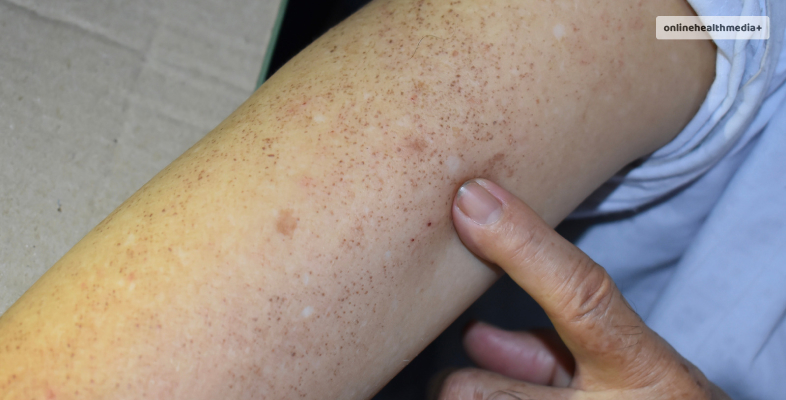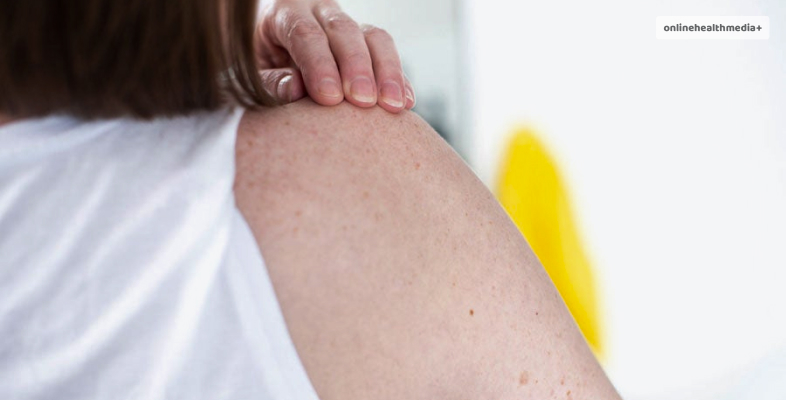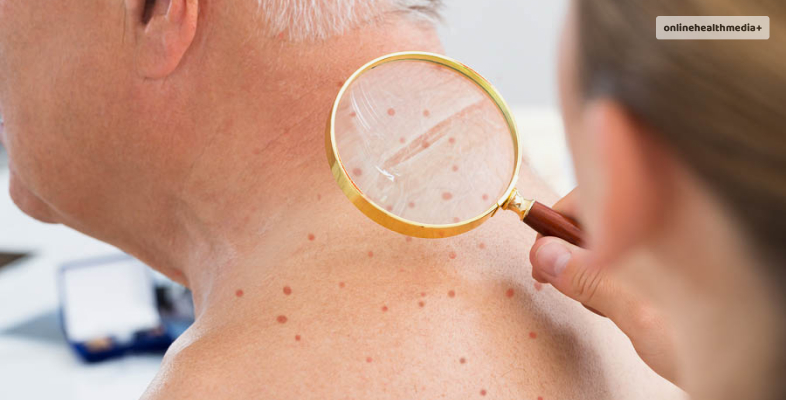Should You Worry About Your Liver Spot? Here Is Why It Could Be A Melanoma Liver Spot.
Melanoma Liver Spots: Your beautiful sun spots in the name of liver spots are always benign. They are memories of you spent under the sun, soaking in Vitamin B.
However, liver spots can sometimes take a malign turn towards melanoma liver spots.
In such cases, you should know your signs and symptoms well enough to notice them early.
This excerpt below will give you a proper definition and distinction between the two. What should you do if that tiny dot turns out to be melanoma?
What Are Liver Spots

Liver spots are flat black, brown, or skin blemishes on sun-exposed areas, including arms, hands, and face. Liver spots are not connected to liver function, contrary to what their name may suggest.
On the contrary, they are caused by the build-up of pigment due to exposure to the sun for a prolonged period. They are typically harmless, but they are often associated with the aging process.
Prevention entails the use of sunscreen hats and avoidance of excess sun exposure. If you are scared, you should consult a dermatologist on the options for removal or treatment.
What Are Melanoma Liver Spots

Liver spots and melanoma are, however, different entities. Melanoma is a skin cancer arising from melanocytes’ pigment-forming cells. It is fatal and must be addressed urgently by a medical professional.
Liver spots are an age association, and one shouldn’t treat them unless for cosmetic reasons. However, melanoma must be closely monitored and treated carefully.
Melanoma screening entails regular skin checks and dermatologist consultations to detect it as early as possible.
Earliest Signs Of Melanoma Liver Spots

To define whether your liver is indeed melanoma spots, here are some of the common symptoms you should be aware of:
1. Asymmetry
Melanomas often exhibit irregular shapes. It shows a concern if one-half of a spot does not match with the other half.
2. Border Irregularity
One of the defining features of melanoma is the unevenness of its edges, including jaggedness. Usually, such spots possess well-situated boundaries.
3. Color Variation
Melanoma lesions can look like dark shades of brown or black or even different colors in the same lesions like blue, red, etc. Usually, benign spots have a single uniform color.
4. Diameter
Although size does not make a melanoma, melanomas are bigger and usually bigger than normal moles. All the spots with a diameter of more than six millimeters will also be under observation.
5. Evolving Appearance
It is important to note that any change concerning size changes, color, shape, and symptoms, such as itching or bleeding, should be looked at as soon as possible.
6. Itchiness or Tenderness
Melanoma may involve pain, itching, or tenderness and cannot be confused with a benign spot.
7. Location
Some forms of melanoma, such as acral lentiginous and mucosal melanomas, could develop anywhere on the body, including skin surfaces that receive little or no sunlight exposure. Check for stains in hidden areas.
8. Personal or Family History
It is also high among those with a personal or family background of having it. Early detection of cancers is possible with regular skin checks.
9. Sun Exposure
Melanoma comes from long-term exposure to ultraviolet radiation. You can partly reduce the risk by using sunscreen and wearing protective clothes.
How To Monitor The Changes In Your Melanoma Liver Spots

If you are still not aware of whether your liver spots are melanoma liver spots, you have to monitor them regularly.
- Do monthly self-checks using mirrors, especially for hard-to-see areas.
- Assess asymmetry, border irregularity, color variation, diameter, and evolution of spots via the ABCDE rule.
- Take clear pictures of your skin so it is easy to detect changes at a later stage.
- Make a straightforward mole and dot map to note development logically.
- Make scheduled appointments with expert dermatologists.
- You must visit a dermatologist immediately once you observe any changes in size, color, figure, or symptoms like scratching or bleeding.
- Note your risk factors, such as family history and personal melanoma history.
- Provision of sun protection measures, like sunscreen, protective clothing, and shade
- In case of any suspicion, you should immediately ensure timely detection and treatment if necessary.
- Inform yourself about melanoma and consult the doctor in case of any suspicion.
Early Treatment Options For Melanoma Liver Spots

Before we get into the treatment options, we would like to give a fair disclaimer!
We are not experts with a medical degree. These are purely based on medical research, and if you have doubts, you should immediately consult a medical professional.
Excisional Surgery: The melanoma and the surrounding margin are typically surgically removed.
Mohs Surgery: This is a specialized technique where experts peel a layer of skin until there are not even the last cancer cells found.
Lymph Node Biopsy: Biopsy helps plan treatment by determining if cancer has spread to lymph nodes.
Immunotherapy: Enhancing the body’s immune system to target and kill the cancer cells
Targeted Therapy: Targeting specific weaknesses in cancer cells by administering drugs.
Chemotherapy: Delivering drugs to kill cancer cells or stop them from growing.
Radiation Therapy: Using high-energy rays to kill cancer cells.
Regular Monitoring: Regular post-treatment surveillance for early detection of any recurrence.
Adjuvant Therapy: Following primary therapy to minimize the risk of relapse.
Early detection, precise diagnosis, personalized treatment, and a plan developed with the help of a healthcare team play important roles in the effective management of melanoma liver spots.
The chances of treating and completely getting rid of melanoma liver spots can increase with early detection and intervention.
Therefore, if any of the points mentioned above resonates with your case, see a doctor today.
Also read
- What Are The Benefits Of Acupuncture?
- What To Expect From The Egg Donor Acceptance Process.
- How Has The Online Health Media Educated People About Kratom?



